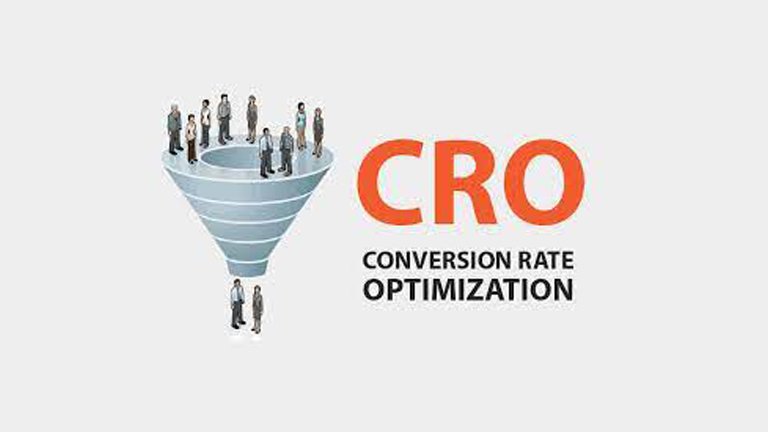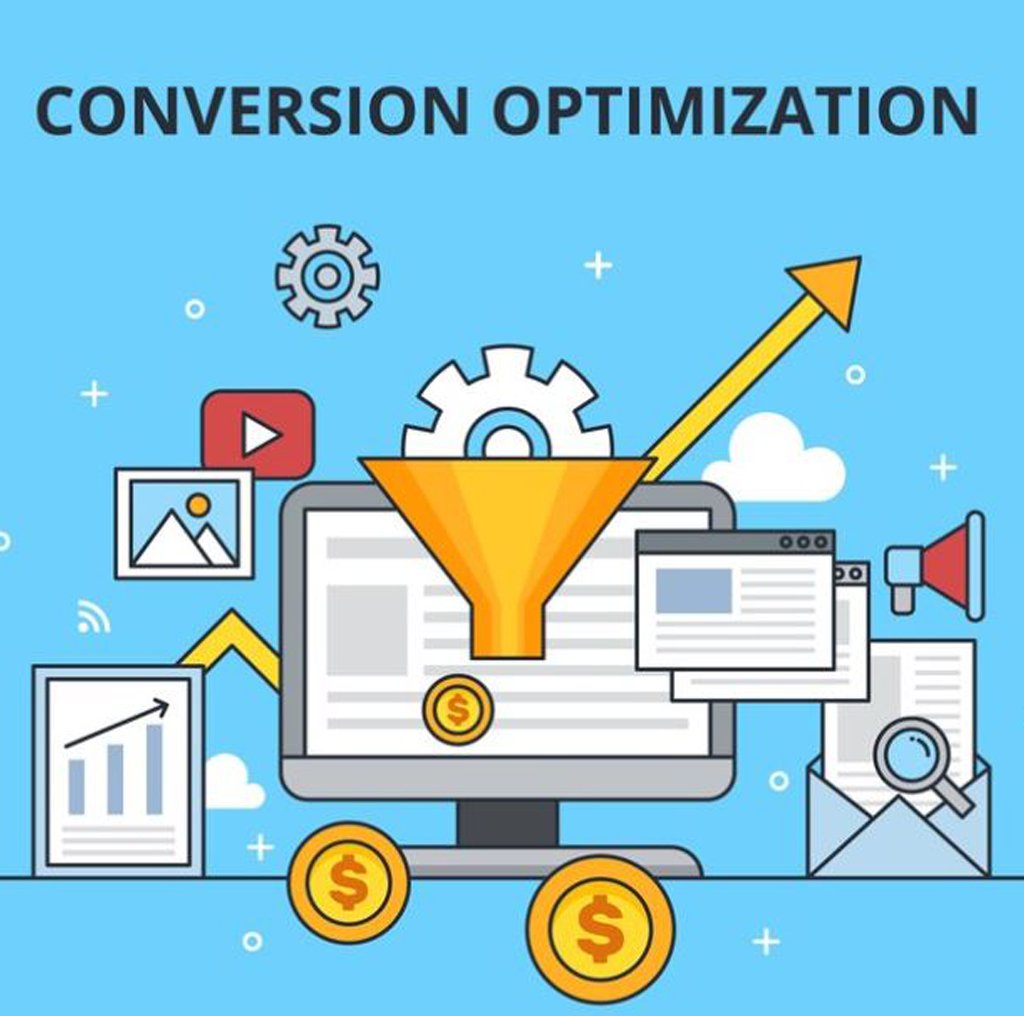The Psychology of Persuasion in Conversion Rate Optimization (CRO)

Conversion Rate Optimization (CRO) is the process of increasing the percentage of website visitors who take a desired action, such as making a purchase, signing up for a newsletter, or filling out a form. Central to CRO is the understanding and application of the psychology of persuasion. By leveraging psychological principles, marketers can influence user behavior and significantly enhance conversion rates. This comprehensive guide will delve into various psychological principles and their application in CRO, providing actionable insights for optimizing your digital marketing efforts.
Understanding the Psychology of Persuasion
The psychology of persuasion involves understanding how people make decisions and what factors influence their choices. Several key psychological principles can be applied to CRO to encourage desired actions:
- Reciprocity
- Commitment and Consistency
- Social Proof
- Authority
- Liking
- Scarcity
- Fear of Missing Out (FOMO)
- Anchoring
- Framing
- Emotional Triggers
Reciprocity
Principle Explanation
Reciprocity is the social norm of responding to a positive action with another positive action. People feel obliged to return favors or kindnesses they receive. In the context of CRO, offering something valuable to users can make them more likely to reciprocate by taking the desired action.
Application in CRO
- Free Resources: Offering free e-books, whitepapers, or trial versions can create a sense of indebtedness, encouraging users to subscribe or make a purchase.
- Exclusive Content: Providing access to exclusive content or discounts can prompt users to reciprocate by engaging more with your brand.
- Personalized Offers: Tailoring offers to individual user needs can increase the perceived value and likelihood of reciprocation.
Case Study
HubSpot effectively uses the principle of reciprocity by offering free tools and resources. This strategy not only attracts users but also builds trust and loyalty, leading to higher conversion rates for their paid services.
Commitment and Consistency
Principle Explanation
People have a desire to be consistent with their past behavior and commitments. Once someone commits to something small, they are more likely to commit to something larger. This principle can be harnessed to gradually lead users towards significant conversions.
Application in CRO
- Micro-Conversions: Start with small, low-risk actions such as signing up for a newsletter or downloading a free guide. These micro-conversions set the stage for larger commitments like purchasing a product or service.
- Progressive Engagement: Use a step-by-step process to gradually engage users, increasing their commitment at each stage.
- Personal Goals: Align your offerings with the personal goals and values of your audience to increase their likelihood of consistent behavior.
Case Study
LinkedIn uses commitment and consistency by encouraging users to complete their profiles step-by-step. As users invest time in filling out their profiles, they are more likely to engage with the platform and utilize its premium services.
Social Proof
Principle Explanation
Social proof is the tendency of people to follow the actions of others. When users see others engaging with a product or service, they are more likely to do the same. This principle leverages the herd mentality and builds trust.
Application in CRO
- Testimonials: Featuring customer testimonials and reviews can reassure potential customers and encourage conversions.
- User Counts: Highlighting the number of users or customers can serve as a powerful form of social proof.
- Influencer Endorsements: Collaborating with influencers to endorse your product can boost credibility and attract their followers.
Case Study
Amazon effectively uses social proof by displaying user reviews and ratings prominently on product pages. This helps potential buyers make informed decisions based on the experiences of others.
Authority
Principle Explanation
People are more likely to be influenced by individuals or organizations perceived as experts or authorities in a particular field. Demonstrating authority can significantly boost credibility and persuade users to take action.
Application in CRO
- Expert Endorsements: Featuring endorsements from industry experts can enhance credibility.
- Certifications and Awards: Showcasing certifications, awards, or recognitions can establish your authority and trustworthiness.
- Content Marketing: Publishing high-quality, authoritative content can position your brand as a thought leader in your industry.
Case Study
Moz, a well-known name in the SEO industry, leverages authority by regularly publishing in-depth research, whitepapers, and guides. This authoritative content helps establish Moz as a trusted resource, driving more users to subscribe to their services.
Liking
Principle Explanation
People are more likely to be persuaded by individuals or brands they like. Factors such as physical attractiveness, similarity, and positive associations can enhance likability.
Application in CRO
- Brand Personality: Develop a relatable and engaging brand personality that resonates with your target audience.
- Storytelling: Use storytelling to create an emotional connection with your audience, making your brand more likable.
- User Interaction: Engage with your audience through social media and other channels, responding to comments and feedback positively.
Case Study
Warby Parker has built a likable brand by emphasizing its mission to provide affordable eyewear and engaging in social initiatives. Their relatable and friendly brand personality has helped them attract and retain loyal customers.
Scarcity
Principle Explanation
Scarcity is the principle that people value things more when they perceive them to be scarce or in limited supply. Creating a sense of urgency can prompt users to act quickly to avoid missing out.
Application in CRO
- Limited-Time Offers: Use time-limited promotions to create a sense of urgency.
- Exclusive Products: Highlight the exclusivity of certain products or services to increase their perceived value.
- Stock Levels: Displaying low stock levels can encourage users to purchase before items run out.
Case Study
Booking.com effectively uses scarcity by showing the number of rooms left at a particular hotel. This creates a sense of urgency and encourages users to book quickly.
Fear of Missing Out (FOMO)
Principle Explanation
FOMO is the fear that others are having rewarding experiences that one is missing out on. This principle can drive people to take action to avoid feeling left out.
Application in CRO
- Real-Time Notifications: Use real-time notifications to show what others are buying or engaging with on your site.
- Event Marketing: Promote events with limited availability to create a sense of exclusivity.
- Social Media Integration: Highlight user-generated content and interactions on social media to showcase community engagement.
Case Study
Facebook leverages FOMO by notifying users about friends’ activities and events. This encourages users to stay active on the platform to keep up with their social circle.
Anchoring
Principle Explanation
Anchoring is the cognitive bias where people rely heavily on the first piece of information they receive (the anchor) when making decisions. In pricing, the initial price shown can influence the perceived value of the product.
Application in CRO
- Price Comparisons: Show original prices alongside discounted prices to highlight savings.
- Tiered Pricing: Use multiple pricing tiers to make mid-range options more appealing.
- Bundling: Offer product bundles at a discounted rate to make individual items seem more valuable.
Case Study
Apple uses anchoring effectively by showcasing higher-priced products first, making their mid-range products seem more affordable by comparison.
Framing
Principle Explanation
Framing involves presenting information in a way that influences perception and decision-making. The way options are framed can significantly affect user choices.
Application in CRO
- Positive Framing: Highlight the benefits of a product or service rather than focusing on the negatives.
- Loss Aversion: Emphasize what users stand to lose by not taking action, as people tend to prefer avoiding losses over acquiring gains.
- Contextual Framing: Provide context for your offers to make them more appealing (e.g., comparing a subscription cost to the price of a coffee per day).
Case Study
Dollar Shave Club uses framing effectively by comparing the cost of their subscription to the price of a cup of coffee, making it seem more affordable and justifiable.
Emotional Triggers
Principle Explanation
Emotions play a crucial role in decision-making. Triggering positive emotions such as happiness, excitement, or trust can encourage conversions.
Application in CRO
- Storytelling: Craft stories that evoke emotions and resonate with your audience.
- Visuals: Use images and videos that evoke positive emotions and reinforce your message.
- Personalization: Tailor your messaging to individual users based on their preferences and behaviors.
Case Study
Coca-Cola’s marketing campaigns often focus on happiness and togetherness, using emotional triggers to build a strong brand connection and encourage product purchases.
Implementing Psychological Principles in CRO
Now that we’ve explored the key psychological principles, let’s discuss how to implement these principles effectively in your CRO strategy.
User Research and Segmentation
Understanding your audience is crucial for applying psychological principles effectively. Conduct user research to gather insights into your audience’s preferences, behaviors, and motivations. Segment your audience based on these insights to tailor your CRO strategies more effectively.
Techniques:
- Surveys and Polls: Collect feedback directly from users about their preferences and motivations.
- Analytics Tools: Use tools like Google Analytics to gather data on user behavior and identify patterns.
- User Personas: Create detailed user personas to represent different segments of your audience and guide your CRO efforts.
A/B Testing and Experimentation
A/B testing is essential for optimizing CRO strategies based on psychological principles. Test different variations of your CTAs, landing pages, and content to see what resonates best with your audience.
Steps:
- Identify Variables: Choose specific elements to test, such as CTA text, button color, or page layout.
- Create Variations: Develop different versions of the element you’re testing.
- Run Tests: Use A/B testing tools to compare the performance of each variation.
- Analyze Results: Determine which variation performs best and implement the winning version.
- Iterate: Continuously test and refine to optimize further.
Personalization and Dynamic Content
Personalization involves tailoring your content and offers to individual users based on their behavior, preferences, and demographics. Dynamic content can change based on user interactions, providing a more personalized experience.
Techniques:
- Behavioral Targeting: Use data on user behavior to show relevant content and offers.
- Email Personalization: Tailor email content based on user preferences and past interactions.
- Dynamic Landing Pages: Create landing pages that adapt to user behavior and preferences in real time.
Leveraging Visual and UX Design
The design of your website and visual elements can significantly impact user behavior. Use design principles to enhance the effectiveness of psychological triggers.
Techniques:
- Visual Hierarchy: Use size, color, and placement to guide users’ attention to key elements.
- Simplified Navigation: Ensure your website is easy to navigate, reducing friction and encouraging conversions.
- Responsive Design: Optimize your website for all devices to provide a seamless experience.
Building Trust and Credibility
Trust is a crucial factor in CRO. Implement strategies that build credibility and reassure users.
Techniques:
- Security Badges: Display security badges and certifications to reassure users about data safety.
- Transparent Policies: Communicate your privacy and return policies.
- Customer Support: Provide accessible and responsive customer support options.
Advanced Strategies for Leveraging Psychology in CRO
For those looking to dive deeper into leveraging psychology for CRO, here are some advanced strategies:
Behavioral Economics
Behavioral economics explores how psychological factors influence economic decision-making. Applying concepts from behavioral economics can provide deeper insights into user behavior.
Concepts:
- Nudge Theory: Subtly guides users towards desired actions through small design changes.
- Choice Architecture: Present choices in a way that influences user decisions, such as default options.
Neuromarketing
Neuromarketing uses neuroscience to understand how consumers’ brains respond to marketing stimuli. This approach can provide valuable insights for optimizing CRO.
Techniques:
- Eye-Tracking Studies: Analyze where users look on a page to optimize design and layout.
- EEG and fMRI: Use brain imaging to understand emotional responses to marketing content.
Gamification
Gamification involves applying game-design elements in non-game contexts to engage and motivate users. This can make interactions more enjoyable and encourage desired behaviors.
Elements:
- Points and Rewards: Offer points or rewards for completing actions, such as signing up or making a purchase.
- Leaderboards: Use leaderboards to create a sense of competition and social proof.
- Progress Bars: Show progress bars to encourage users to complete actions, such as filling out a profile.
Measuring the Impact of Psychological Principles on CRO
To ensure the effectiveness of psychological principles in CRO, it’s essential to measure their impact accurately. Here are some key metrics and tools to consider:
Key Metrics
- Conversion Rate: The percentage of visitors who complete the desired action.
- Bounce Rate: The percentage of visitors who leave the site after viewing only one page.
- Average Session Duration: The average amount of time users spend on the site.
- Customer Lifetime Value (CLV): The total revenue generated from a customer over their lifetime.
- Net Promoter Score (NPS): A measure of customer satisfaction and loyalty.
Tools and Technologies
- Google Analytics: Track user behavior, conversion rates, and other key metrics.
- Heatmaps: Use tools like Hotjar to visualize where users click and scroll on your site.
- A/B Testing Tools: Use tools like Optimizely or VWO to conduct A/B tests.
- CRM Systems: Track customer interactions and segment your audience for personalized marketing.
The psychology of persuasion is a powerful tool in Conversion Rate Optimization. By understanding and applying principles such as reciprocity, commitment and consistency, social proof, authority, liking, scarcity, FOMO, anchoring, framing, and emotional triggers, marketers can significantly influence user behavior and enhance conversion rates. Implementing these principles requires a deep understanding of your audience, continuous testing and optimization, and a commitment to building trust and providing value.
Effective CRO is both an art and a science, combining creative strategies with data-driven insights. By leveraging the psychology of persuasion, businesses can create compelling user experiences that drive conversions and build lasting relationships with their customers. Whether you’re a seasoned marketer or just starting, understanding these psychological principles and how to apply them can transform your CRO efforts and lead to substantial growth and success.

